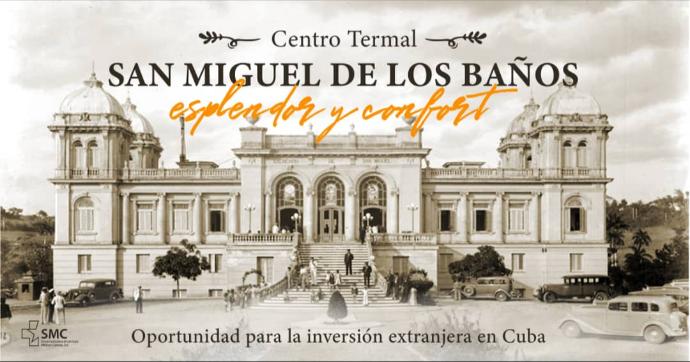
San Miguel de los Baños Thermal Center
Located in the municipality of Jovellanos in the province of Matanzas, it is a town of the same name, known in the first half of the 20th century as the "Paradise of Cuba".Founded in 1912, it was opened as a closed thermal center in 1930. The three-story, renaissance-style building of great architectural value, with four domes that constituted an island of luxury in the Cuban countryside, was the first hydromineral and climatherapeutic station in Latin America, currently out of operation.
It achieved great fame due to its mineral water springs, which are medicinal and curative.
Its deposit is complex, of semi-confined waters (under pressure), with mineral-medicinal waters in general of magnesium bicarbonate type.
The bicarbonate-sulfate, magnesium-calcium and siliceous waters, with values of hydrogen sulfide (H2S), vary between 1.76 mg/l and 10.56 mg/l, are stable from the physical and chemical point of view and have components such as silica and magnesium.
San Miguel de los Baños, at 800 feet above sea level, is surrounded by elevations with its own microclimate. Its similarity with European facilities is due, perhaps, to the fact that the engineer in charge of its execution took part in the works of the famous Monte Carlo spa. In its vicinity, during the 50's, a bottling plant of mineral-medicinal waters was built, well known internationally, where soft drinks and sodas were manufactured with low mineralization waters, as well as other beverages.